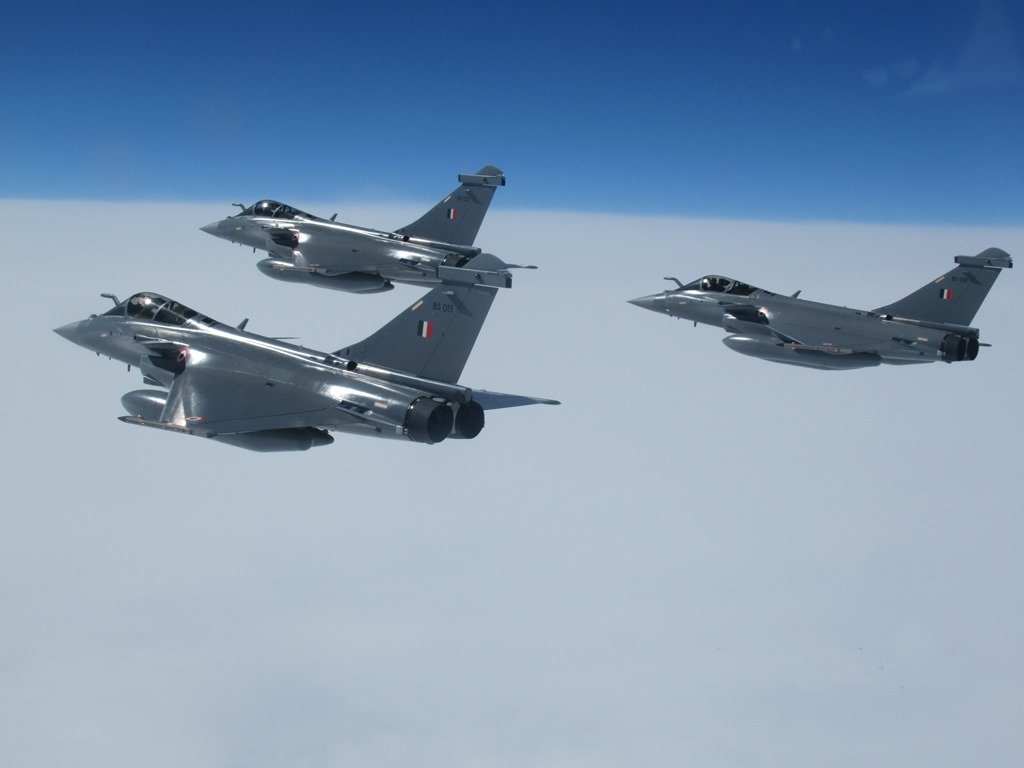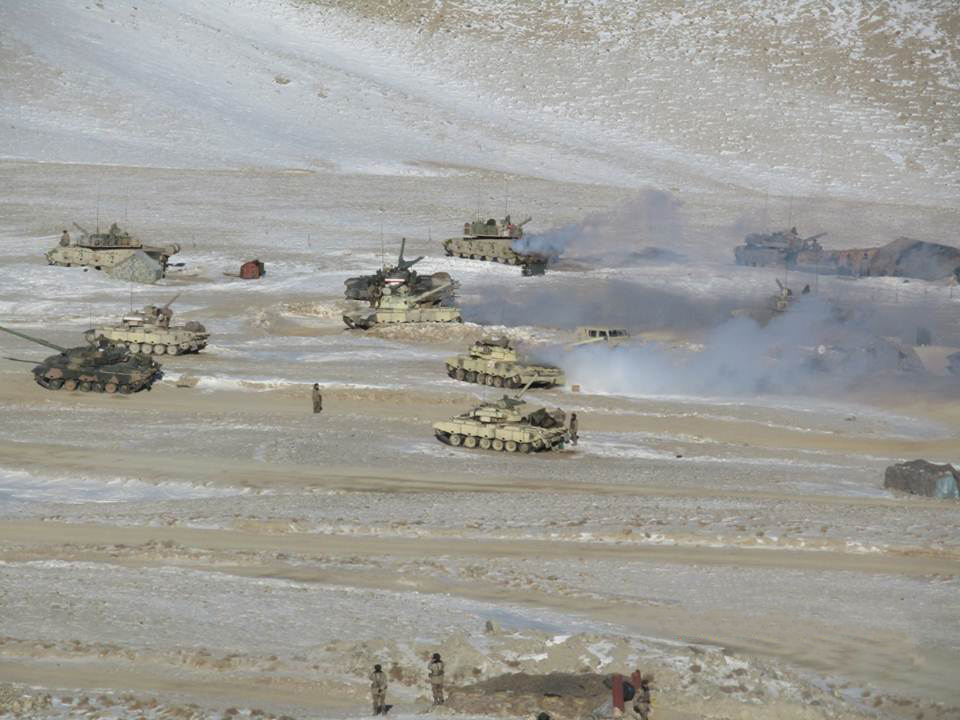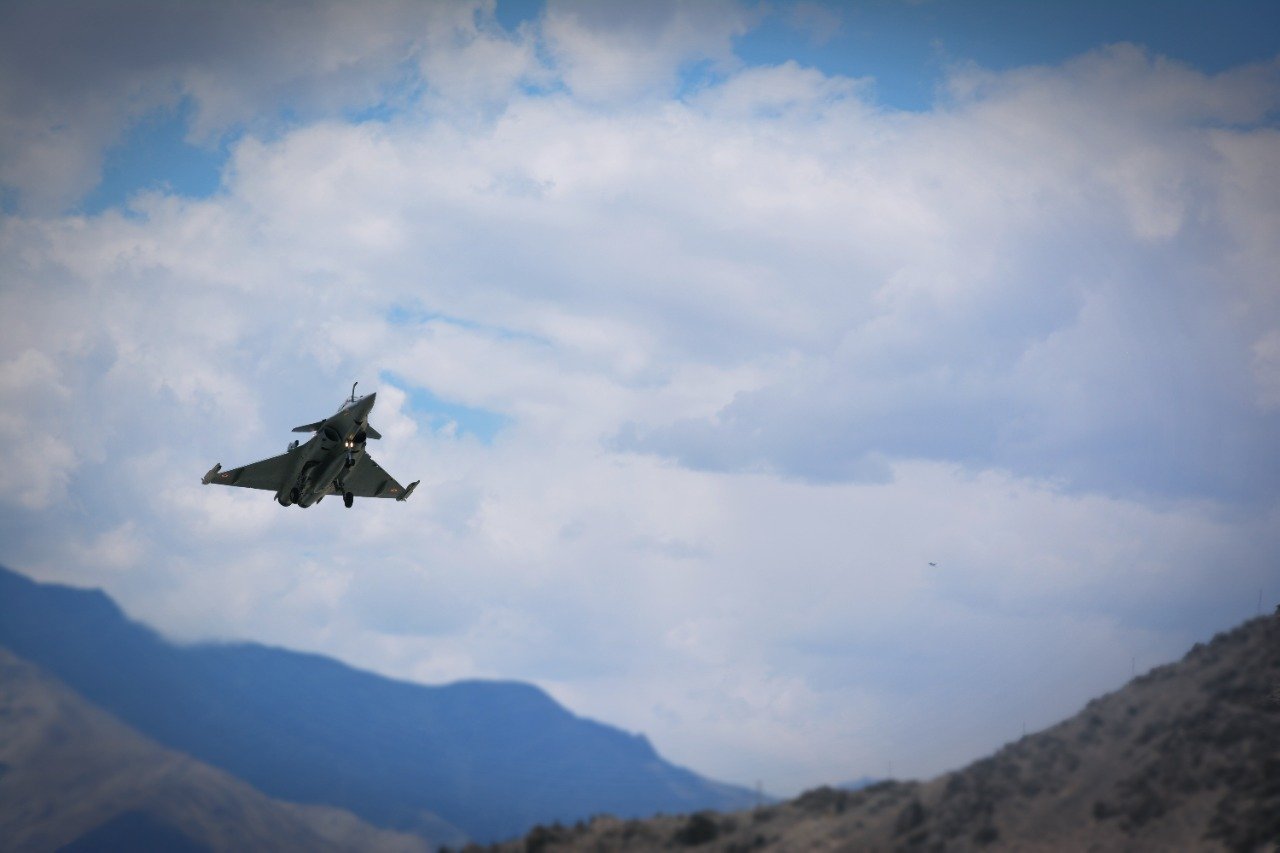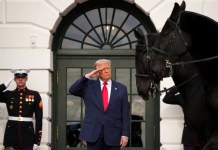India is all set to operationalize its second Rafale squadron by July-end, giving the much-needed boost to the Indian Air Force amid a protracted border standoff with China, according to the latest reports.
China Emerging As World’s Largest Military Force; Can US Money-Power ‘Tame’ Chinese Man-Power?
The first squadron, “17 Golden Arrows”, is already operational from Punjab’s Ambala airbase. With the second one ready for deployment, IAF will be able to fully cover the eastern and western sectors of the Line of Actual Control, the de facto India-China border, which runs from Arunachal Pradesh to Ladakh.
The two nuclear-armed neighbors have been locked in a border conflict for more than a year now. Despite multiple rounds of talks, the impasse continues.
Analyzing this problem threadbare, a veteran Pakistani diplomat says the time has come for India “to build and deploy hard power to deter the Chinese“.
According to former Pakistani Ambassador to the US, Husain Haqqani, “the hope of some Indian policymakers to resolve the matter diplomatically has not so far been fulfilled“. He noted that the multiple rounds of military-level talks since last year have been unable to break the stalemate.

A foreign policy expert, Haqqani further mentioned that India can no longer hope to deal with China diplomatically, but has now to rely mostly on hard power.
He stated that India’s recent decision to deploy an additional 50,000 troops on the border with China in Ladakh may be the beginning of India’s assertion of its hard power.
The EurAsian Times reported that since last year, the deployment of troops at the Line of Actual Control (LAC) has increased by approximately 40 percent.
Many experts had termed this huge Indian deployment as “offensive defense”, which would provide India with the opportunity to “attack and seize territory in China” in case such a situation arises.
According to estimates, almost 200,000 troops are now guarding the LAC, from Ladakh to Arunachal Pradesh.
A series of military-level talks have been held, though they have achieved only limited success. Last month, both countries agreed to hold the 12th round of corps commander-level talks to attain “complete disengagement from all friction points along the LAC in the Western Sector”, reported The Hindu.
Since May 2020, India and China have engaged through an alternate Working Mechanism for Consultation and Coordination (WMCC) on the border affairs and Corps Commander level talks to resolve the LAC stand-off.
In September last year, Indian forces had captured strategic heights along the south bank of the Pangong Tso lake, providing India with a clear view of the troop movements in the surrounding areas.

In February this year, the two countries completed the process of disengagement around the Pangong Tso in eastern Ladakh. But no consensus has been reached so far on the remaining friction points such as at Gogra and Hotsprings, in Demchok as well as the strategic Depsang Valley.
‘China Sees India As A Potential Rival’
Similar to China’s large territory and its vast population, India is the only country to match up with China on these important criteria, Haqqani and Aparna Pande of the Hudson Institute wrote in a piece for The Hill. They are of the view that India is viewed by China as an important potential rival.
They mentioned that the mostly unmarked boundaries, lying in difficult terrains, between the two countries, have given China the perfect opportunity to realize its ambition to seize parts of Indian territories.
China has been occupying India’s territories since 1962. China now wants to increase its influence across South Asia and the Indian Ocean Region, sparking a bitter competition for the same sphere of influence.

The increasing Chinese belligerence in the region, and at the borders with India, coincided with the rise in China’s military and economic power, the authors wrote. While India may not have been able to keep up with China’s phenomenal growth, they mentioned that India so far had “acquiesced to Chinese aggression without sufficient military action”.
India’s Military Manoeuvres
While India may have in the past shied away from hard military action, the present standoff with China has been different. It seems that India may not only be relying on diplomatic overtures alone to counter China on the border, a move that was also suggested by Haqqani and Pande.
Over the past few months, China has deployed additional forces under the Xinjiang Military Command, which oversees Chinese patrolling along the India border near Ladakh, along with constructions of military infrastructure such as bomb-proof bunkers, and new airfields.
For its part, India has also deployed additional troops on the border, as mentioned above. As part of the “offensive defense” strategy, K-9 Vajra and M777 Howitzers have reportedly been positioned in the high-altitude Ladakh region.

In addition, the Indian Air Force has flown the newly acquired “omni-role” Rafale jets over Ladakh. The first Rafale squadron – “17 Golden Arrows” stationed at Ambala carries out regular sorties over the border region.
The second Rafale squadron, to be operational by July-end, is based at Hasimara in West Bengal, which is the closest airbase to the Chumbi Valley, at the tri-junction of India, Bhutan and China. India already has the Sukhoi-30 MKIs stationed at Assam’s Tezpur and Chabua, and according to experts the addition of the Rafale squadrons on the eastern front enhances the IAF’s capabilities manifold.
To further enhance its military capabilities, India announced plans to acquire 1,750 futuristic infantry combat vehicles (FICVs). The FICVs are expected to be capable of moving across varied terrains, thus enabling their deployment in border areas with Pakistan and China.
Earlier this year, India’s Defence Ministry had also issued preliminary approval for the acquisition of 118 improvised Arjun Mark-1A tanks.
The QUAD Equation
According to Haqqani and Pande, India and the US have converging interests, especially regarding China. “In developing a pivot to Asia or an Indo-Pacific policy, successive US administrations have assumed that a shared concern about China makes India a natural American ally”.
With its strong roots as a democracy and its rising economic power, India is an ideal partner and future ally in Asia and the Indo-Pacific, the author duo said. The QUAD comprising the US, India, Japan and Australia, is already rattling China with its increased presence in the Indo-Pacific.
India has for long, maintained cordial diplomatic relations and engagements with countries around the world. This, however, is not the case with China. While China may be increasing its own economic clout, most countries are averse to the idea of forging deeper strategic ties with Beijing.
For instance, the G-7 has recently criticized China on issues ranging from the alleged human rights abuses in Xinjiang and its growing belligerence in the South China Sea to intimidatory tactics in the Taiwan Strait. China also faces global scrutiny over the origin of the Covid-19 virus.
With inputs from Anupama Ghosh
Read More




